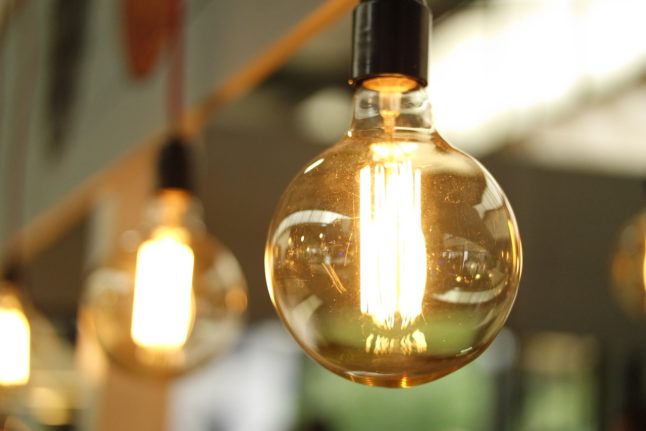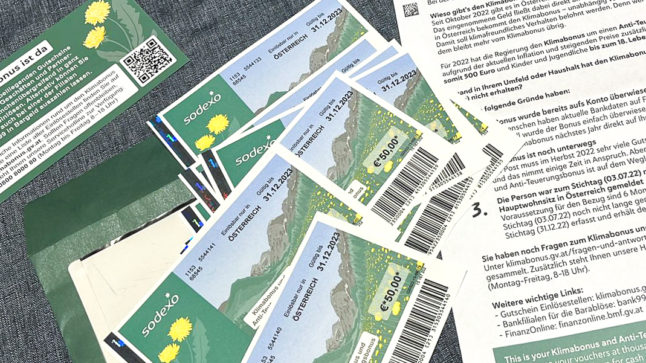Grocery retailers in Austria have agreed on an emergency plan to secure the food supply to the nation in the event of blackout.
The agreement followed a meeting with Energy Minister Leonore Gewessler (Greens) and Agriculture Minister Norbert Totschnig (ÖVP) on Tuesday (November 29), reports ORF.
FOR MEMBERS: Energy crisis: What to do in case of a power outage in Austria
A statement released following the meeting said: “As a system-critical infrastructure, the domestic food retail trade has a social responsibility to be prepared for emergencies and to be able to ensure the basic supply of the population even in the event of a blackout.”
What is the emergency plan for Austria’s food supply?
If Austria is hit by a widespread blackout, all grocery stores will close to protect the supplies.
On the second day, supermarkets will open from 10am to 3pm, but staff will hand out bags of fresh food at the front of the shops and customers will not be allowed to enter.
This will take place at Spar, Interspar, Maximarkt, Billa, Penny, ADEG, Sutterlüty, Hofer, Lidl, Nah- und Frisch, Unimarkt and M-Preis stores.
The bags will contain ready-made food, water, non-perishable bread and canned goods. Convenience products and candles will be sold for cash. Baby items and hygiene products will be available on request.
If a blackout extends to a third day, only dry food will be distributed.
Additionally, all Austrian households are advised to have a supply of food to last for 14 days, as well as around €100 in cash per family member.
READ MORE: Who to call and what to say in an emergency in Austria
How secure is Austria’s energy supply?
Austria is a country with a stable electricity supply – with most of the power coming from hydroelectric or wind power farms.
In 2020, hydropower accounted for 55 to 67 percent of the electricity generated in the Alpine country. The leading electricity companies operate around 130 hydropower plants, especially taking advantage of its mountainous location.
According to the country’s Climate and Energy Ministry, wind power accounted for 10 percent, while solar 4 percent. In total, around 80 percent of Austria’s electricity comes from renewables.
Vienna has one of the most secure supplies worldwide, according to the independent regulatory authority E-Control. Moreover, the current figures on the subject of security of supply show that the Viennese were only affected by a power failure for just under 18 minutes a year – an improvement from 2021.
The capital is also equipped with “black start-capable power plants”, which can start up independently without outside help – thus ensuring supply even if a prolonged widespread power blackout should occur in Europe.
The situation in the rest of the country is similar. But Viennese authorities have asked the federal government to enter into talks with the federal states to develop a national emergency plan.
Emergency preparation guidelines for the general population include keeping a flashlight with working batteries in case of a power grid malfunction, keeping a battery-powered radio in your home and even having non-perishable food and potable water in the household.
READ ALSO: Reader question: What are the chances of blackouts in Austria this winter?
Austria’s energy emergency system
Since March, shortly after Russia invaded Ukraine, Austria has been at level 1 (the early warning level) of the alert system related to energy consumption.
However, due to the aggravated situation surrounding gas deliveries, the increasing number of cases of suspected sabotage of gas pipelines to Europe and the current developments relating to the Ukraine war, an alert level (level 2) could be expected for Austria.
Level 2 is declared if the gas situation deteriorates. At this stage, businesses are encouraged to use alternatives to natural gas whenever possible.
Level 3 – the emergency level – is activated when gas can no longer be supplied and the current demand can no longer be met. Measures for industry, such as substituting natural gas with other energies as energy control measures, are to be put in place.



 Please whitelist us to continue reading.
Please whitelist us to continue reading.
Member comments